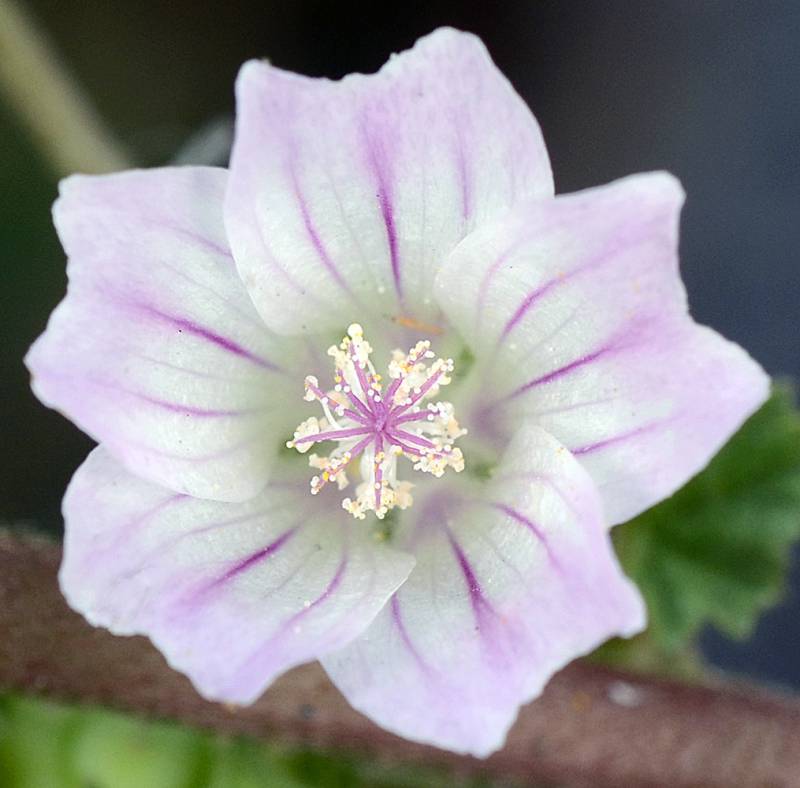Malva parviflora
Malva neglecta
cheeseweed, alkali mallow, small-whorl mallow
dwarf mallow
Leaves palmately veined, with petioles up to twice as long as the blades;
leaf blades cordate-reniform, 2-5 cm. long and slightly broader, shallowly 5-7 lobed, with fine teeth.
Flowers in small clusters in the leaf axils, on long pedicels to sessile, white to pale lavender;
calyx shallowly 5-lobed, about equaling the corolla;
petals 5, clawed;
filaments fused into a tube, the stamens freed from the tube single or in pairs;
style branches stigmatic most of their length, not capitate;
ovary superior, the carpels in a ring around a central axis.
Carpels flattened and strongly cross-corrugated on the back.
Malva parviflora
Malva neglecta
Occurring west of the Cascades crest in lowland western Washington; British Columbia to California, east to the Great Plains, also in southeastern and northeastern North America.
Widely distributed on both sides of the Cascades crest in Washington; Alaska to California, east across North America to the Atlantic Coast.
- Local floras:
BC,
CA,
OR,
WA
- Local Web sites:
CalFlora,
CalPhotos,
Flora NW,
PNW Herbaria
WildflowerSearch
iNaturalist (observations)
USDA Plants Database
- LBJ Wildflower Center
- SEINet
- Plants of the World Online
- Encyclopedia of Life
- Wikipedia
- Google Image Search
- Local floras:
BC,
CA,
OR,
WA
- Local Web sites:
CalFlora,
CalPhotos,
Flora NW,
PNW Herbaria,
Turner Photog.
WildflowerSearch
iNaturalist (observations)
USDA Plants Database
- LBJ Wildflower Center
- SEINet
- Plants of the World Online
- Encyclopedia of Life
- Wikipedia
- Google Image Search



